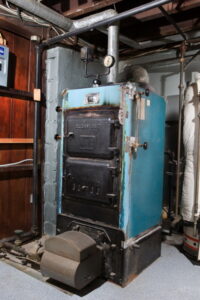It would be wonderful if you only had to purchase one furnace for your home (probably the furnace that came with it) and never had to worry about it again. It would work flawlessly for your family each winter season, providing you with warmth, comfort, and safety, and you’d never have to have it replaced.
This is a fantasy, of course. Any powerful mechanical system can run into malfunctions, and no heating system can run forever. But it’s easy to fall into thinking that your heating system is just going to run year after year—and then one day, it doesn’t, and you’re stuck trying to get it replaced.
The way to avoid this situation is to take stock of your furnace and know when to start considering a replacement. We’ll address the question of when a furnace is “too old” below.
When Is It Time to Replace Your Furnace?
- A natural gas furnace typically lasts around 15 years, and an electric furnace about 20 years
- If the system has lacked regular maintenance, it may fail earlier
- When repair estimates × furnace age exceed a threshold (e.g. 5,000), replacement is often more cost‑effective
- Older furnaces become inefficient, unreliable, and risk developing safety issues like a cracked heat exchanger
If your furnace is approaching or past these benchmarks, planning for replacement is wiser than continuing repairs.
The Average Service Life of a Furnace
First, let’s look at how long you can expect a furnace to last on average. We have reliable manufacturer data on this, as they provide an estimated service life for any furnace they make. A natural gas furnace can last for around 15 years, and an electric furnace can last for 20 years. Both can make it past these upper estimates, but we don’t recommend trying to push a furnace too far past this as it will become increasingly unreliable and inefficient. In the case of a natural gas furnace, it runs a higher risk of developing hazards like a cracked heat exchanger.
Take Maintenance Into Account
A furnace’s service life also depends on how well it’s maintained. HVAC manufacturers and all HVAC technicians recommend annual professional inspections and tune-ups for furnaces, with fall being the best time to have it done. If a furnace has this level of maintenance, it will probably have no trouble reaching the upper range of its service life. Without regular maintenance, it will likely fall short—in fact, it may not even make it to half its expected lifespan.
The Question of Repair vs. Replace
If your older furnace is currently experiencing performance problems, you’ll face the debate of whether to pay for a repair to keep the heater going or have it replaced. As we mentioned above, we think it’s better to replace a furnace that’s over the 15-to-20-year service life expectancy rather than put money into a repair. It’s better to put those funds into a new furnace rather than in an increasingly inefficient furnace that may only last one or two years longer.
Your mileage may vary on this, however. One way to measure if a repair is worth it is to multiply the cost of the repair by the age of the furnace. If the result is greater than 5,000, the repair is too expensive and it’s better to invest in a new system.
Talk to Our Heating Pros
Still unsure about the future of your furnace? Then call our pros, who are experts when it comes to heating in Moneta, CA and throughout Southwest Virginia. We can help you sort through the options and find the ideal choice for your home’s comfort.
Frequently Asked Questions
Question: How long can a furnace typically last?
Answer: A natural gas furnace is generally expected to last about 15 years, while an electric furnace may last around 20 years. Going beyond these estimates increases risks of failures and inefficiency.
Question: Does maintenance affect how long a furnace remains viable?
Answer: Yes. Proper annual inspections and tune‑ups help a furnace reach or exceed its expected lifespan. Without routine maintenance, a furnace may wear out well before its time.
Question: When should I consider replacement over repair for an older furnace?
Answer: If the furnace is past its expected lifespan and experiencing performance problems, replacement is often the better choice rather than pouring money into frequent repairs.
Question: How do I decide if a repair is worth it on an old furnace?
Answer: One guideline is to multiply the repair cost by the furnace age. If that value exceeds about 5000 (in dollar terms, per the article’s logic), replacing the furnace may be more economical.
For quality furnace service, contact W.C. Butler Heating and Air Conditioning. Southwest Virginia’s choice since 1985.

